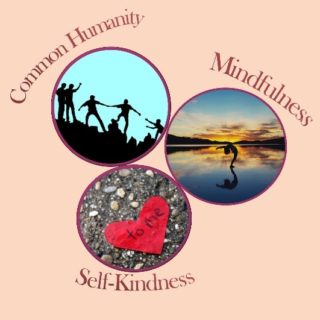
“Discomfort is the price of admission to a meaningful life.” – Susan David
Dr. Susan David is a Psychologist at Harvard Medical School and is a founder and co-director of the Institute of Coaching at McLean Hospital of Harvard Medical School. In her Ted Talk about emotional agility, which you can find here, she discusses the concept of emotional agility, how society has made a push towards positivity, and inadvertently, how this may have led to additional suffering.
There is a push in our media, in our society, and in our homes to be positive; think positive, look on the bright side, or simply, smile! Dr. David posits that this push towards positivity often leads to denial of the truth and denial of our emotions. We can end up feeling bad about ourselves for experiencing negative emotions and negative thoughts because we’re supposed to be happy and positive all of the time.
The truth is, life isn’t always happy and positive. Certainly there are times in our lives when we are happy and things are going well and we feel good, but there are also times when things do not go our way and we just feel bad. Dr. David suggests that instead of trying to be positive during these times, and pushing those negative thoughts away, we need to embrace them, to learn to deal with and cope with them rather than trying to run away from them. Dr. David’s Ted Talk mirrors much of what is discussed in Acceptance and Commitment Therapy and, in particular, the idea that we must accept, rather than try to push away, negative thoughts and feelings. These things are a way of life and like a rollercoaster, sometimes we have to just wait it out.
I like to use grief as an example in my practice with clients. Our society treats grief as something that is normal – we are expected to be sad or to cry when someone close to us passes away. We also know that people we love may pass away, and as much as we do not like that thought, we have no choice but to accept it. We treat grief with a lot of respect, in most cases, and allow it to come and go naturally. I believe that we need to learn to treat the rest of our emotions with the same type of respect that we treat grief. When we are feeling anxious or sad, rather than beating ourselves up for these feelings we should be accepting that this is how it is right now, and allowing those feelings to come and go. Often, the more we try to control these feelings, the worse off we become. Either we actually end up enhancing the feelings that we started with, or we add additional distress, such as shame or frustration when we do not succeed in getting rid of the feelings.
I would like to challenge you to you try accepting your negative thoughts and feelings, and treating them with the same respect that you would grief. Listen to Dr. David’s Ted Talk, and reflect back on your own experiences of trying to get rid of your negativity. Try something new, and see what happens.

Source: Click












